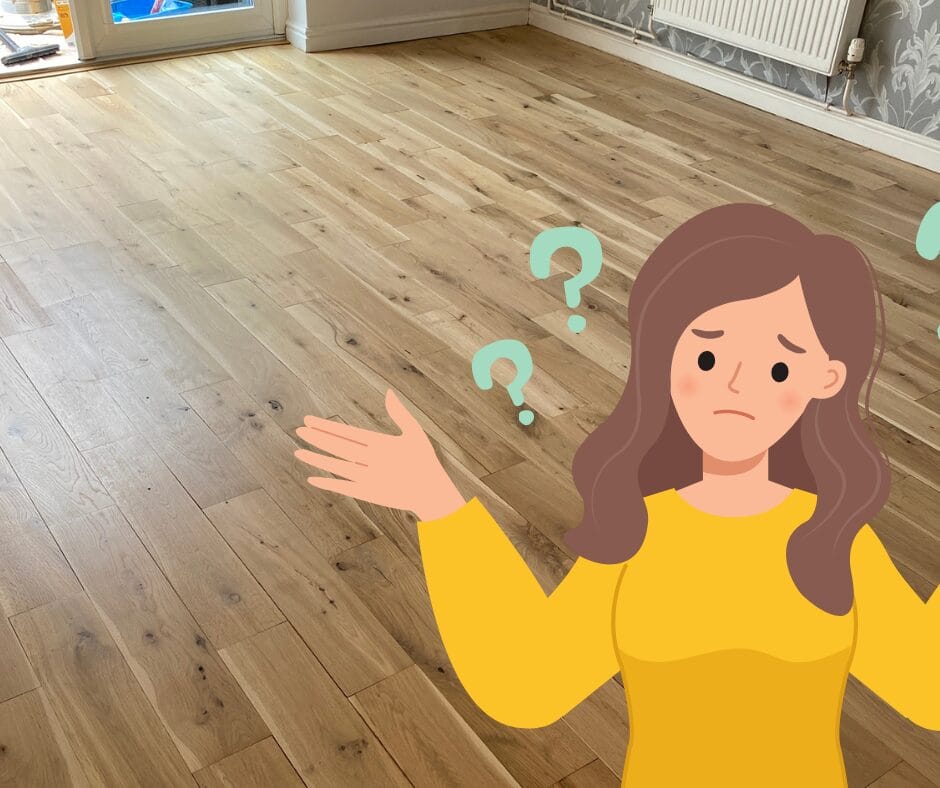Wooden flooring adds a touch of warmth and character to your Newmarket home. But when it comes to making informed choices about maintenance, repair, or the ideal wood type for your floors, it’s vital to understand the differences between solid wood and engineered wood. In this article, we’ll delve into these distinctions, helping Newmarket residents make the right flooring decisions.
Solid Wood Flooring
A Timeless Classic Let’s kick things off by examining solid wood flooring. They crafted this flooring type entirely from solid wood, with each plank featuring the same timber from top to bottom. This unadulterated composition defines solid wood floors.
Upon closer inspection, you’ll notice that solid wood planks interlock via a tongue and groove system, resulting in a sturdy and stable surface. However, it’s crucial to remember that even solid wood floors have their limits when it comes to sanding and refinishing.
As time goes on and you sand your solid wood floor to restore its appearance, you’ll gradually wear down the surface. The tongue and groove locking system dictates how much sanding you can undertake before reaching the plywood layer underneath. Over-sanding risks breaching the tongue, weakening the plank, and reducing its lifespan. Thus, despite being solid wood, these floors, too, have a finite life cycle.
Engineered Wood Flooring
A Modern Solution In contrast, engineered wood flooring takes a different approach. It consists of a genuine wood top layer (e.g., oak) and multiple layers of high-quality plywood beneath it. This layered construction enhances stability, making it an excellent choice for Newmarket homes where moisture levels fluctuate, such as those with radiant floor heating systems.
Like solid wood floors, engineered wood floors employ a tongue and groove locking system, ensuring a secure fit. While engineered wood may not boast the same thickness as solid wood, it excels in durability and resistance to moisture-induced movement.
How to Differentiate Between the Two
Now, you might be wondering how to differentiate between solid wood and engineered wood in your Newmarket home. While the age of your flooring can provide a clue, it’s not a definitive indicator. Modern solid wood floors are still prevalent.
A more precise way to determine your flooring type is by examining the side of a floorboard. If you observe distinct layers with identical wood running from top to bottom, you’re dealing with solid wood. Conversely, engineered wood will reveal layers with a top wood layer and plywood beneath it.
Another method is to inspect threshold areas or locations where radiator pipes penetrate the floor. Examining the exposed edges can often reveal whether the wood extends continuously through the plank or if it displays the layered characteristics typical of engineered wood.
Choosing the Ideal Flooring for Your Newmarket Home
When it comes to selecting between solid wood and engineered wood flooring, consider your specific needs and budget. For Newmarket residents in environments with varying humidity levels, engineered wood often proves more practical due to its stability. However, if you’re drawn to the timeless charm of solid wood and can accommodate its maintenance requirements, it can be a splendid addition to your Newmarket home.
So, a summary of what we’ve learned
Understanding the distinction between solid wood and engineered wood flooring is crucial for making informed decisions and ensuring proper maintenance. Both options offer unique advantages, and your choice ultimately hinges on your preferences and the specific requirements of your Newmarket home. Whether you opt for a classic solid wood floor or a modern engineered wood surface, you can relish the natural beauty and warmth that wood flooring brings to your Newmarket living space.
Below is the video where all the information in this article came from:



